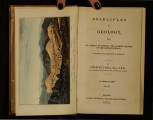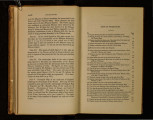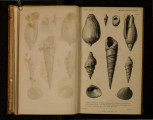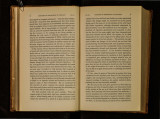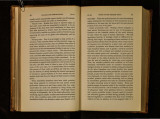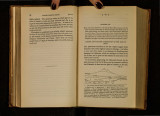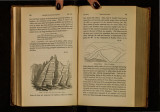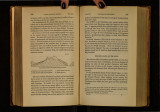| OCR Text |
Show 70 GLOSSARY. GnAl\HNE.ZE, the order of plants to which grasses belong. Elyrn., gramen, grass. GnANITE. An unstratified or igneous rock, generally found inferior to or associated with the oldest of the stratified rocks, and sometimes penetrating them in the form of dikes and veins. It is composed of three simple minerals, felspar, quartz, and mica, and derives its name from having a coarse granula1· structure; granwn, Latin for grain. Westminster, Waterloo, and London bridges, and the paving-stones in the carriage-way of the ~ondon streets are good examples of the most common varieties of granite. GnAUWACKE, a German name, generally adopted by geologists for the lowest members of the secondary strata, consisting of sandstone am.l slate, and which form the chief part of what are termed by some geologists the t-ransition rocl~s. The rock is very often of a grey colour, hence the name, grau being German for grey, and wacke being a provincial miner's term. GRE.Jo;NSAND. Beds of sand, sandstone, limestone, belonging to the Cretaceous Period. See Table II. F, p. 390. The name is given to these beds, because they often, but not always, contain an abundance of green earth or chlorite scattered through tlJe substance of the sandstone, limestone, &c. See vol. iii. p. 324. GREENSTONE, a variety of trap, composed of hornblende and felspar. GRIT, a provincial name for a coarse-grained sandsto11e. GYPSUM, a mineral composed of lime and sttlphuric acid, hence called also sulphate of lime. Plaster and stucco are obtained by exposing gyp!mm to a strong heat. It is found so abundantly near Paris, that Paris plaster is a common term in this country for the white powder of which casts are made. The term is used by Pliny for a t~tone used for the same purposes by the ancients. The derivation of it is unknown. GYPSEous, of, or belonging to, gypsum. GYROOONI'l'ES. Bodies found in fresh-water deposits, originally sup· posed to he microscopic shells, but subsequently discovereJ to be the seed-vessel offresh-water plants of the genus chctra. See vol. ii. p. 273, and 2d Edit. p. 280. Etym. yvpo!:, gyros, curved, and yovo!;, gonos, seed; on account of their external structure. HEMIPTERA, an order of insects, so called from a peculiarity in their wings, the superio1· being coriaceous at the base, and membranous at the apex, ,~1-wrv, hemisu, half, and 7r'TEpov, pteron, wing. HoRNBLENDE, a simple mineral of a dark green or black colour, GLOSSARY, 71 which enters largely into the composition of several 'varieties of the trap rocks. HYDROPHY'fES. Plants which grow in water. Etym., vowp, hydor, water, and <f>vrov, phyton, plant. HYPOGENE RocKs. For an explanation of this term, see vol. iii. p. 374. IcEB~RG. The great masses of ice, often the size of hills, which float m the polar and northern seas. Elym., ice, and be1·g, German for hill. IcnTHYOSAURUs, a gigantic fossil marine reptile, intermediate between a crocodile and a fish. Etym., tx.Sv!:, ichthzts, a fish, and uavpa, saura, a lizard. INDUCTION, a consequence, conclusion or inference, drawn from propositions or principles first laid down, or from the observation and examination of phenomena. I N.FUSOR'Y ANI.l\IALC ULEs. Minute living creatures generated in many infusions; and the term infusoria has been given to all such animalcules whether found in infusions or in stagnant water, vinegar, &c. INsPISSATED. Thickened. Etym., spissus, thick. INvEnTEBRATED ANIMALs. Animals which are not furnished with a back-bone. For a further explanation, see " Vertebrated Animals.'' IsoTHERMAL. Such zones or divisions of the land, ocean, or atmosphere, which have an equal degree of mean annual warmth, are said to be isothermal, from tO'O!:, isos, equal, and Oeppq, therme, heat. JuRA Ln.IESTONE. The limestones belonging to the oolite group, see Table II. H, p. 391, constitute the chief part of the mountains of the Jura, between France and Switzerland, and hence the geologists of the Continent have given the name to the group. KIMMERIDGE CLAY, a thick bed of clay, constituting a member of the Oolite Group. See Table II. H, p. 391. so called because it is found well developed at Kimmeridge in the isle of Purbeck, Dorsetshire. LAcusTRINE, belonging to a lake. Etym., Lacus, a lake. LA.l'tiiN.ZE. Latin for plates ; used in geology, for the smaller layers of which a stratum is frequently composed. LAMANTINE. A living species of the herbivorous cetacea or whale |







